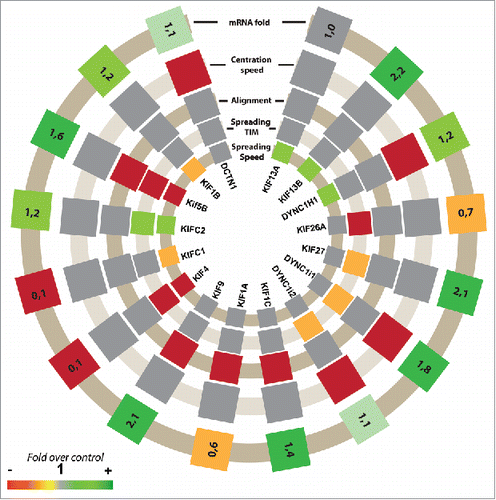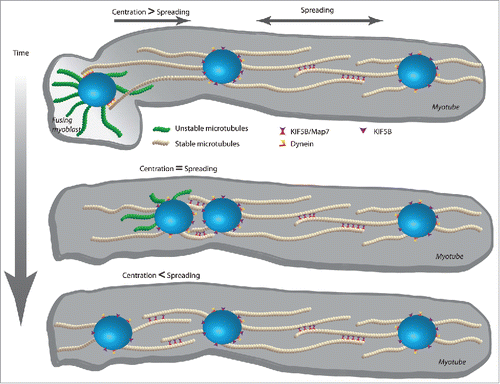Figures & data
Figure 1. Schematic representation of the effects of knock-down of 16 microtubules motors on nuclear behaviors and their mRNA fold changes after differentiation. The color coding indicates an increase or decrease compare with a control situation as shown on the bottom left. Spreading speed corresponds to the speed when nuclei are in movement. Spreading TIM: Time In Motion during the spreading movement; in control situation, nuclei spend 55% of the time in movement. Alignment: In a control situation, 70% of myotubes have aligned nuclei. Centration speed: nuclear speed between the site of myoblast fusion and the first myotube nucleus.

Table 1. Values of centration and spreading speeds after silencing of the indicated motors, and their increase of expression from myoblast to myotube.
Figure 2. Model of the centration and spreading movements in the differentiating muscle cells. The minus end motor Dynein will promote the centration movement using longer and more stable microtubules emanating from myotube nuclei. With time the microtubules from the newly entered nucleus will become stable (acetylation, detyrosination), Kif5b expression will increase, and thus favor the spreading movement.

